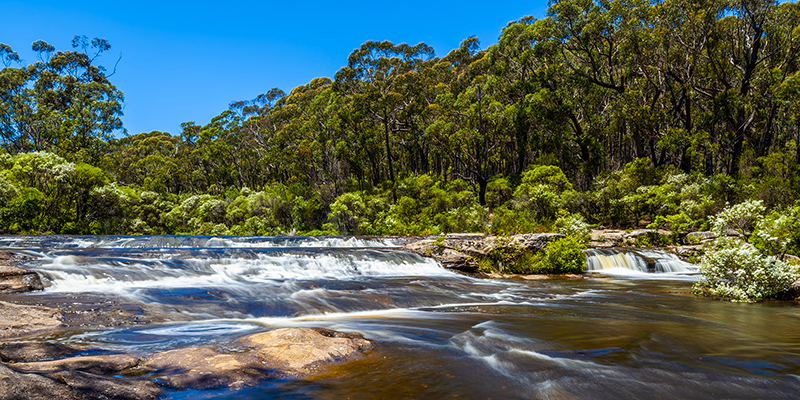Replacement water sharing plans for Greater Sydney
Two new replacement water sharing plans for Greater Sydney will come into effect from 1 July – providing a clear vision for how water is shared and managed across the region for the next decade.
Executive Director of Water Planning Giselle Howard said the Greater Metropolitan Region Unregulated River Water Sources 2023 and Greater Metropolitan Region Groundwater Sources 2023 plans were finalised using the most up-to-date flow data for our city.
“These 10-year plans underpin the way we allocate and share water, ensuring everyone is getting their fair share in both wet and dry times,” Ms Howard said.
“With drier conditions already beginning in many corners of NSW and the Bureau of Meteorology putting the state on an El Niño alert, the way we manage and use our water resources has never been more important.
“The plans provide water users with a clear picture of when and how water will be available for extraction while protecting the fundamental environmental health of the water source and ensuring it is sustainable over the long-term.
“They include water access rules, water trading arrangements, extraction limits, dam releases, monitoring and reporting requirements, mandatory conditions for licence holders and Aboriginal water rights.
“However, we recognise the devastating impacts of major flooding in 2022, which is why some rules for the Hawkesbury Nepean were not changed. These will be revisited in 2027 when robust discussions with the community can take place.
“The water sharing plans also take into account an increase in demand for water as our cities and regions continue to grow, ensuring it goes where it is needed the most to support town water supply, businesses, industries and the environment.”
The unregulated river plan covers more than 5 million people across the Greater Sydney region - spanning from the Shoalhaven River catchment in the south to the Hawkesbury and Lower Nepean River catchments to the north and from the Upper Nepean and Upstream Warragamba catchments in the west to the coast.
The groundwater plan contains 14 groundwater sources across the same geographic region as the unregulated river plan.
The plans are informed by the latest flow, gauge, rainfall and groundwater recharge data and include new surface water modelling and support the Greater Sydney Water Strategy which secures Sydney’s drinking supply for at least 4 decades.
The plans were finalised after extensive consultation in 2022, which included three online webinars and 14 face-to-face sessions. 32 submissions were also received from the public after the plans went on public exhibition.
Some of the major changes for the Greater Metropolitan Region Unregulated River Water Source plan include:
- Scaled environmental flow releases from the Upper Nepean and Tallowa Dams in line with falling dam levels across Greater Sydney.
- Implementing part of priority 2 of the Greater Sydney Water Strategy with the potential to conserve up to 35 gigalitres a year for Sydney’s water supply during dry times and droughts while maintaining environmental benefits.
- Establishing an environmental contingency allowance across metropolitan dams to manage specific conditions such as aquatic weed infestation or adverse water quality events.
Changes in the Greater Metropolitan Region Groundwater Sources include:
- Boundaries were reviewed to address unnecessary water trade barriers.
- Extraction limits were refined.
- A new major utility water licence can be granted that is consistent with the Greater Sydney Water Strategy.
- The future role of groundwater in drought management.
Water Sharing Plans have a 10-year lifespan and are audited every five years to ensure they are still relevant and appropriate. Upon review, they are either extended if no changes are needed or replaced.
To view the water sharing plans and learn more, visit watering sharing plans.
